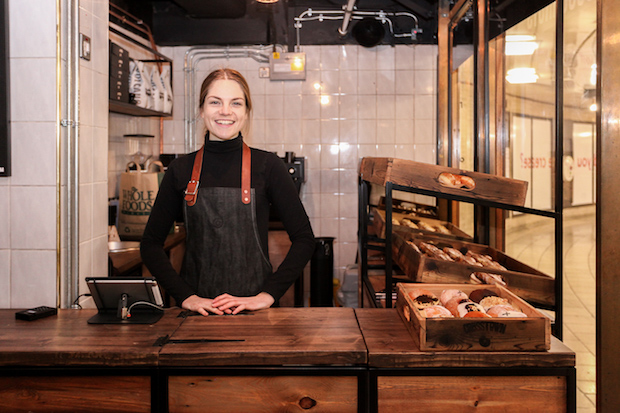From the moment you start planning your pop-up store, you need to know what the aim of it is - and crucially - to know what success looks like to you. Whether it’s boosting brand awareness, making a profit, or getting customer feedback, the sooner you start capturing data and information, the better you’ll be able to measure this success from early on. Here are some of the most common reasons why brands are using pop-ups, and how to measure the success of them.

Boosting brand awareness: Measuring PR and Social Media
When it comes to PR, Anna Malmberg from The Communications Store suggests, “the metrics you will want to track are links back to the website, SEO value, link shares, keyword success etc. This can all be done by sharing trackable links with the journalists.”
Always check the circulation of the publications you’re pitching to so you know how many people you could potentially reach through them. You can then monitor your website traffic performance on Google Analytics – and see if during and post your pop-up there is an impact on people searching for you. If your PR campaign has been successful, you’ll see traffic coming from the media outlets you targeted.
As well as keeping tabs of online visitors, you should aim to ask visitors in your store where they heard about you. Keep this feedback logged in a spreadsheet. This can can help you track online and offline activity, and will become a useful resource when it comes to finding key take outs for your next pop-up.
In terms of social media, there are some handy online tools that don’t require you to manually enter information. Good monitoring platforms include Klout, Sprout Social, Social Mention and Hootsuite - these all help you measure sentiment and user generated content so you can see how people are reacting to your pop-up across the most popular social media channels.
When Bloom and Wild launched the ‘Peony Pop-Up’ in TOPSHOP, they kept a close eye on their social performance using Sprout and a hashtag # thepeonyshop. Sara Gordon, Head of Brand at Boom and Wild explains, “we compared blended social engagement to our peak periods (Mother's day, Valentine's Day) and our baseline off-season engagement. Compared to peak season engagement which is typically quite high, we doubled both our Facebook and Instagram engagement rates and grew our following by 11%. This was from a mix of PR, our alignment with Topshop and using influencer visits on the day to extend our pop-up reach with authentic content.”

Testing the market: Monitoring feedback from customers
Talk to your customers and use in store customer surveys to get instant feedback. Make sure you keep all this feedback recorded in a spreadsheet to look at once your pop-up has finished. Even casually asking a customer why they’re buying something can give you some great insights.
Eat Cookoo, a home-cooked food delivery service, used a pop-up in Old Street station to test their concept. The founder, Joanne Thompson, shares her advice for getting customer feedback:
“The best way we found is to have a short set of fixed questions that you ask any potential customers who you talk to at your stall (this can be done in a conversational way and not as a survey). The questions can be a mixture of ones about the general idea and more specific customer questions that you are trying to answer. That way you can use the pop-up up to not only sell your product but also to get very specific customer feedback, from your target customer base. These results can then be stored in a spreadsheet and used in product development."

You can use customer feedback to understand your brand better and what you’re selling. For instance, motivations people have for buying something could lead to a new product idea, or repeated descriptive words for that product could help inform your next PR or social campaign.
Making a profit: Understanding sales performance
The best way to see your sales results instantly (and to keep the cash-flow going) is to use a point of sale device like iZettle. The data that you can access through the iZettle app gives you instant numbers that can help you look at whether sales increase online and measure the cost of your store versus online advertising (for example you can calculate cost per sale during your pop-up and one month after your pop-up, and check the conversion rate from visit to purchase and monitor if this also changes.)

When Crosstown Doughnuts launched a six-month pop-up inside Piccadilly Circus station, they wanted to test their business model in a high-footfall area with a cross section of people from daily commuters to tourists. They used iZettle as a POS, which the founder, JP Then, pointed out, “ the in-app sales analysis made it easy for us to identify which products, days and specific times worked best for us so that we could focus our marketing and sales strategies.”
You should also be monitoring how your layouts are working. If you move things around, does that affect what you sell? A few incremental changes can make a big difference and there’s a lot to be said for making iterative tweaks to your store and taking learnings from that. A pop-up is your chance to experiment and draw fast conclusions.
And finally, whilst ‘profit’ is a scary word for many young businesses, it often isn’t the most helpful measure of success. When you’ve taken into consideration your set up costs, your running costs, your advertising costs and your shop-fitting costs, and measured that against the sales you’ve made, you could easily be at a loss. But that doesn’t mean you’ve failed. Success takes various forms, so you just need to know which makes the most sense for your brand.

Related Articles:
How to get the most out of your POS
How to keep your customers after your pop-up disappears
The most common mistakes every pop-up makes